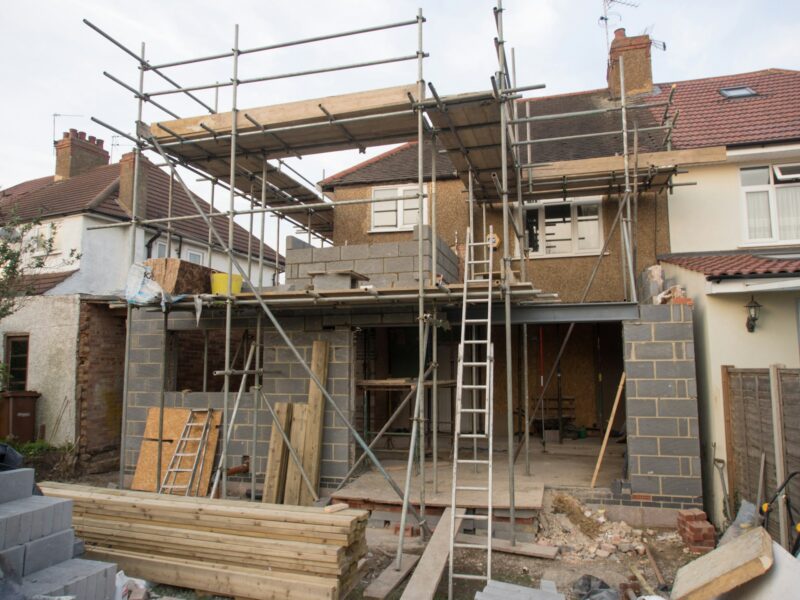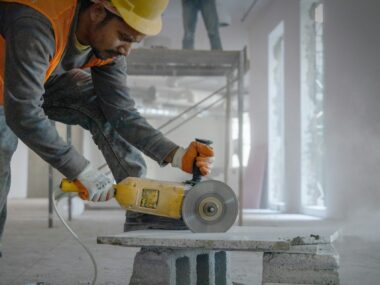If you’ve ever marveled at a towering skyscraper or a sturdy dock, you might have wondered what lies beneath those impressive structures.
The secret is often in the piles—those seemingly unseen heroes that ensure foundations remain reliable for decades. This blog post explores the pivotal role of pile construction in securing the long-term integrity of structures.
We’ll dig into the essentials of piles, their construction, and why they are critical in creating a robust foundation.
Whether you’re interested in dock piling repair or the fundamental support structures of buildings, understanding pile construction may offer insights into the reliability of everyday feats of engineering.
Understanding Pile Construction
The Basics of Pile Construction
Pile construction is a process used to set a deep foundation for structures to be built above ground level.
Piles are driven into the earth to reach more stable soil layers that can support the weight of the structure. This method ensures a solid foundation, especially when surface soils are too weak for traditional footings.
Piles are usually long, column-like elements made of materials such as wood, steel, or concrete. They’ve been utilized for centuries, with historical evidence showing their use in ancient civilizations to support large structures.
Today, the craft has evolved significantly, employing modern technology and materials to enhance their efficiency and application.
The ultimate goal of pile construction is to distribute the loads of a building or dock evenly across stable strata. This distribution minimizes settlement and movement, which could otherwise compromise structural integrity over time.
Types of Piles
Piles can be classified into several types based on their function and material. Understanding these variations helps in choosing the right kind for a specific application.
- End-bearing piles transfer load directly through their tip to a firm layer of soil or rock. They are best used in situations where dense soil or rock is near the surface.
- Friction piles, on the other hand, transfer loads along the length of the pile by friction, particularly useful when a firm layer is not easily reachable.
- Materials used in piles include wood, steel, and concrete, each type has its advantages. Wood is cost-effective, steel offers great strength, and concrete provides durability and versatility.
Selecting the right type of pile is crucial to ensure the foundation complements the building’s purpose and environmental conditions.
The Role of Technology in Modern Pile Construction
Technology plays an indispensable role in enhancing pile construction methods. With advancements in engineering and materials science, the efficiency of pile installation and their capacity to bear immense loads have significantly improved.
The use of state-of-the-art equipment allows for precise pile placement, reducing the need for extensive manual labor and minimizing errors.
Geo-technological surveys enable engineers to accurately assess soil conditions, leading to informed decisions on pile types and installation methods.
Material innovations have also broadened the scope of pile construction. Composite materials and advanced coatings provide resistance to environmental factors, prolonging the life of piles and improving their structural performance.
Ensuring Long-Term Structural Integrity
Importance of a Strong Foundation
A firm foundation is the hallmark of any enduring structure. Without it, no matter how well-designed an upper section is, it may eventually succumb to significant issues.
Therefore, pile construction remains a critical component of structural engineering. Piles ensure that the loading is evenly distributed across all points, preventing any differential settlement from causing damage.
This is particularly crucial for structures built over varied soil conditions or near water bodies, where traditional foundations are rendered ineffective.
A well-designed pile system also accounts for geophysical changes such as soil erosion or natural subsidence, ensuring static reliability throughout the building’s lifespan.
Challenges in Pile Construction and Their Solutions
Pile construction is not devoid of challenges. The complexities of subterranean layers and unexpected geotechnical conditions can pose significant hurdles. However, engineers have adopted various strategies to overcome these issues.
Engineers routinely conduct comprehensive soil investigations to gain insights into subsurface conditions before project initiation. This prepares them for any anomalies and allows for accurate design adjustments.
Another solution lies in utilizing modular designs and adaptive pile systems that can be customized or extended based on findings during the construction process.
These solutions ensure that even unforeseen issues can be effectively managed without significant disruption.
Monitoring and Maintenance of Piles
Even with careful construction, maintaining long-term structural integrity requires regular monitoring and maintenance of piles. This practice ensures that any signs of wear or environmental impact are addressed promptly.
Technological tools like sensors and monitoring systems can detect potential issues early on. These systems offer real-time insights into the stress and strain experienced by piles, allowing for preemptive maintenance.
Regular inspections and repairs, like dock piling repair, are necessary to address physical damages or corrosion that might affect pile performance.
Engaging qualified professionals to conduct these evaluations ensures that any necessary interventions are undertaken before they become critical.
Applications of Pile Construction
Dock Piling Repair
Dock piling repair is a niche but crucial part of pile construction. Docks, being in constant contact with water, face challenges like erosion, marine borer activity, and rusting—issues that threaten their integrity.
Repair and maintenance involve assessing the piles for damage and proactively replacing or repairing affected sections. This process ensures a safe and durable docking structure that withstands the daily rigors of weather and water movement.
Employing specialists who understand the complexities of dock piling repair guarantees that interventions are thorough and aligned with maritime standards. It ensures not only immediate safety but also extends the dock’s lifespan.
Support for Urban Infrastructure
The urban environment poses unique challenges, including limited space and variable soil conditions. Pile construction offers an ideal solution by providing necessary support while minimizing the impact on surrounding areas.
The deep foundations provided by piles allow for the construction of tall structures even in densely populated urban landscapes.
They also offer stability to infrastructure projects like bridges, viaducts, and tunnels by anchoring them to bedrock.
This ability to adapt to changing landscapes demonstrates the vital role of pile construction in modern, sustainable urban development.
Ensuring Building Reliability
From residential complexes to commercial skyscrapers, piles are instrumental in ensuring reliability. By absorbing and distributing the structural load, piles prevent uneven settlement, prolonging the building’s life.
These foundations mitigate risks associated with seismic activities, flooding, and other natural events, offering much-needed peace of mind to architects, developers, and residents alike.
The meticulous planning and engineering behind piles reflect the need for foundational security, ensuring that structures are safe and reliable over generations.
Concluding Thoughts on Pile Construction
Pile construction is an indispensable technique in building structures that withstand the test of time.
Whether through dock piling repair, providing essential support, or ensuring overall reliability, piles form the backbone of countless engineering projects.
Recognizing the value of a strong foundation helps foster an appreciation for the sophistication involved in construction.
It highlights the importance of informed decision-making, careful planning, and consistent maintenance to preserve structural integrity.
For those eager to explore more about pile construction’s role and engage professionals for tailored advice, reaching out to engineering experts can unlock new possibilities and knowledge.
Whether you’re building anew or maintaining existing structures, pile construction remains a steadfast ally in creating durable, reliable foundations.






